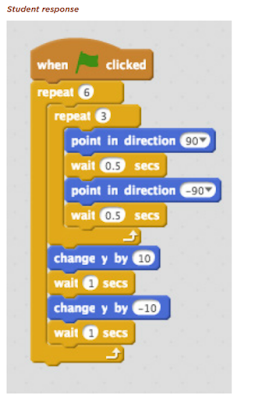The document begins with the statement "Our education system needs to change how we
prepare our children and young people to participate,
create and thrive in this fast-moving digital world." The purpose of this Year 1- 10 curriculum is to ensure that all students are able to use digital technologies to solve problems and take advantage of new opportunities in this digital or second machine age. In Years 11 - 13 they will be specializing these skills for industry and how they can lead the next generation of innovation.
There are three strand to this curriculum:
1. Technological Practice
Students develop a range of outcomes, including concepts,
plans, briefs, technological models, and fully realised
products or systems. Students investigate issues and
existing outcomes and use the understandings gained,
together with design principles and approaches, to
inform their own practice.
2. Technological Knowledge
students
develop knowledge particular to technological
enterprises and environments and understandings
of how and why things work. Students learn how
functional modelling is used to evaluate design ideas
and how prototyping is used to evaluate the fitness
for purpose of systems and products as they are
developed.
3. Nature of technology
students
develop an understanding of technology as a discipline
and of how it differs from other disciplines. They learn
to critique the impact of technology on societies and
the environment and to explore how developments and
outcomes are valued by different peoples in different
times.
Within this document there are also eight outcome statements for the Curriculum Levels. Below are the outcomes expected for students at the end of Year 10 & Year 13.
By Year Five (Progress Statement Three) students will be able to:
- develop a basic computer programs in a
block-based programming environment
- understand the need to be precise because
computers cannot infer
- make algorithms more efficient through the
use of iteration (repeats/loops)
- understand that multiple algorithms can have
the same outcome but are not necessarily equally
efficient.
It is noted in the Plan B Report that by 2030, "80% of work will be collaborative and 20% will be individual. Currently the workplace is 80% individual and 20% collaborative."
Skills required in our future will be ideation, long term pattern recognition and complex communication. This draft document promotes this shift and it will be interesting to see how schools/ teachers react to this change.
To think about this as a technical change would be mad! Simply saying to staff 'well, we have to do this' would be the wrong attitude to take.
Rather, we should look at this process as an adaptive change. This involves looking at:
- What your values as an educator/ school are
- Why you are making this shift in practice
- How you will make this shift in practice
- What you will do with the students to achieve this shift in practice
- Launching multiple experiments and analyzing feedback/ data to see effective practice
- Drawing together the 'Collective Genius" in your school/ CoL - Everyone has gifts and talents - make sure you harness these individuals
Historically 70 - 80% of organisations fail in to shift in a moving context because they fail to focus on these five questions:
Why - What are the opportunities & threats?
How - Do we design our learning journey?
Who - Do we collaborate with?
What - Steps do we take?
Where - Are we heading to?
If you are reading this post think about your school today and discuss these questions with your team. If there are some grey areas then these could be your focus.
- Do we have a single sign on for our students?
- Are we operating one platform? (G Suite or Office 365)
- Do we have an e - learning strategy?
- Do we have an e- learning leader/ team to develop our staff?
- Do we have a minimum standard of integrating technology into classroom practice?
- Are our students creating content for others or passive consumers of content?
- Are our classroom operating under the Substitution model (Pen & Paper - Device) or Redefinition ( Creation of new tasks) under the SAMR Model






No comments:
Post a Comment